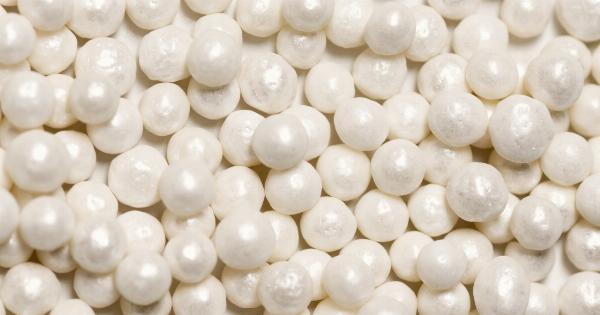Asthma is a chronic respiratory condition that affects millions of people worldwide, including children. In fact, asthma is one of the most common chronic diseases among children, and its prevalence has been steadily increasing over the years.
Child asthma can have a significant impact on a child’s quality of life, affecting their ability to participate in physical activities and even disrupting their sleep. It is important for parents and caregivers to understand the causes, symptoms, and treatment options for child asthma to ensure appropriate management and improve the child’s overall well-being.
Causes of Child Asthma
The exact cause of asthma in children is not fully understood. However, researchers believe that a combination of genetic and environmental factors play a role in the development of the condition.
Some potential causes and triggers of child asthma include:.
1. Allergens
Allergens such as dust mites, pollen, pet dander, and mold can trigger asthma symptoms in susceptible individuals, including children.
When exposed to these allergens, the body’s immune system reacts by releasing chemicals that cause inflammation and narrowing of the airways, resulting in asthma symptoms.
2. Respiratory Infections
Respiratory infections, particularly viral infections like colds and flu, are common triggers of asthma attacks in children. These infections cause inflammation in the airways, making them more sensitive and reactive to other asthma triggers.
3. Genetic Factors
Asthma tends to run in families, suggesting a genetic predisposition to the condition.
If a child has parents or siblings with asthma, their risk of developing asthma is significantly higher compared to children without a family history of the condition.
4. Environmental Factors
Exposure to tobacco smoke, air pollution, and certain chemicals in the environment can increase the risk of developing asthma or triggering asthma symptoms in children.
Living in areas with high levels of pollution or near industrial sites may also contribute to the development of child asthma.
Symptoms of Child Asthma
The symptoms of child asthma can vary from mild to severe and may change over time. Some common symptoms of child asthma include:.
1. Wheezing
Wheezing is a high-pitched whistling sound that occurs when air flows through narrowed airways. It is one of the most recognizable symptoms of asthma in children and can be heard during inhalation and exhalation.
2. Shortness of Breath
A child with asthma may experience shortness of breath, especially during physical activities or after exposure to asthma triggers. They may complain of feeling out of breath or having difficulty taking deep breaths.
3. Coughing
Persistent coughing, particularly at night or early in the morning, is another common symptom of child asthma. The cough may worsen with exercise or exposure to allergens.
4. Chest Tightness
Children with asthma often describe a feeling of tightness or discomfort in their chest. This sensation may be accompanied by wheezing or difficulty breathing.
5. Fatigue
Asthma symptoms can be physically exhausting for children, leading to fatigue and reduced stamina. Consequently, they may avoid physical activities or sports, which can affect their overall health and quality of life.
Treatment for Child Asthma
Although there is no cure for asthma, proper treatment can help control symptoms and prevent asthma attacks in children. The goals of asthma treatment for children include:.
1. Asthma Action Plan
Every child with asthma should have an individualized asthma action plan developed in partnership with their healthcare provider.
This plan outlines the child’s specific triggers, medications, and steps to take during an asthma attack or worsening of symptoms.
2. Inhalers and Medications
Medications for child asthma are usually delivered through inhalers, which allow the medication to reach the airways directly. Inhalers may contain bronchodilators to relax the airway muscles or corticosteroids to reduce inflammation.
It is essential for parents and caregivers to understand the proper technique for using inhalers and ensure the child receives the correct dose as prescribed by their healthcare provider.
3. Avoiding Triggers
Identifying and avoiding triggers that worsen asthma symptoms is an important aspect of managing child asthma.
This may involve minimizing exposure to allergens, ensuring good indoor air quality, and taking precautions during viral respiratory infections.
4. Allergy Testing and Immunotherapy
If allergies are suspected or identified as triggers for a child’s asthma, allergy testing may be recommended.
Allergy testing can help identify specific allergens that trigger asthma symptoms, and the child may benefit from allergen immunotherapy, also known as allergy shots. Immunotherapy involves exposing the child to small amounts of the allergen over time to build up tolerance and reduce the severity of allergic reactions.
5. Regular Monitoring and Follow-up
Children with asthma should have regular check-ups with their healthcare provider to monitor their symptoms, evaluate their treatment plan, and make any necessary adjustments.
This ensures that the child’s asthma is well-managed and reduces the risk of severe asthma attacks or complications.
Conclusion
Child asthma is a chronic condition that can significantly impact a child’s daily life.
By understanding the causes, symptoms, and treatment options for child asthma, parents and caregivers can ensure that the child receives appropriate medical care and support. Early diagnosis, a personalized treatment plan, and proper management techniques can help improve the child’s quality of life and minimize the impact of asthma on their overall well-being.



























